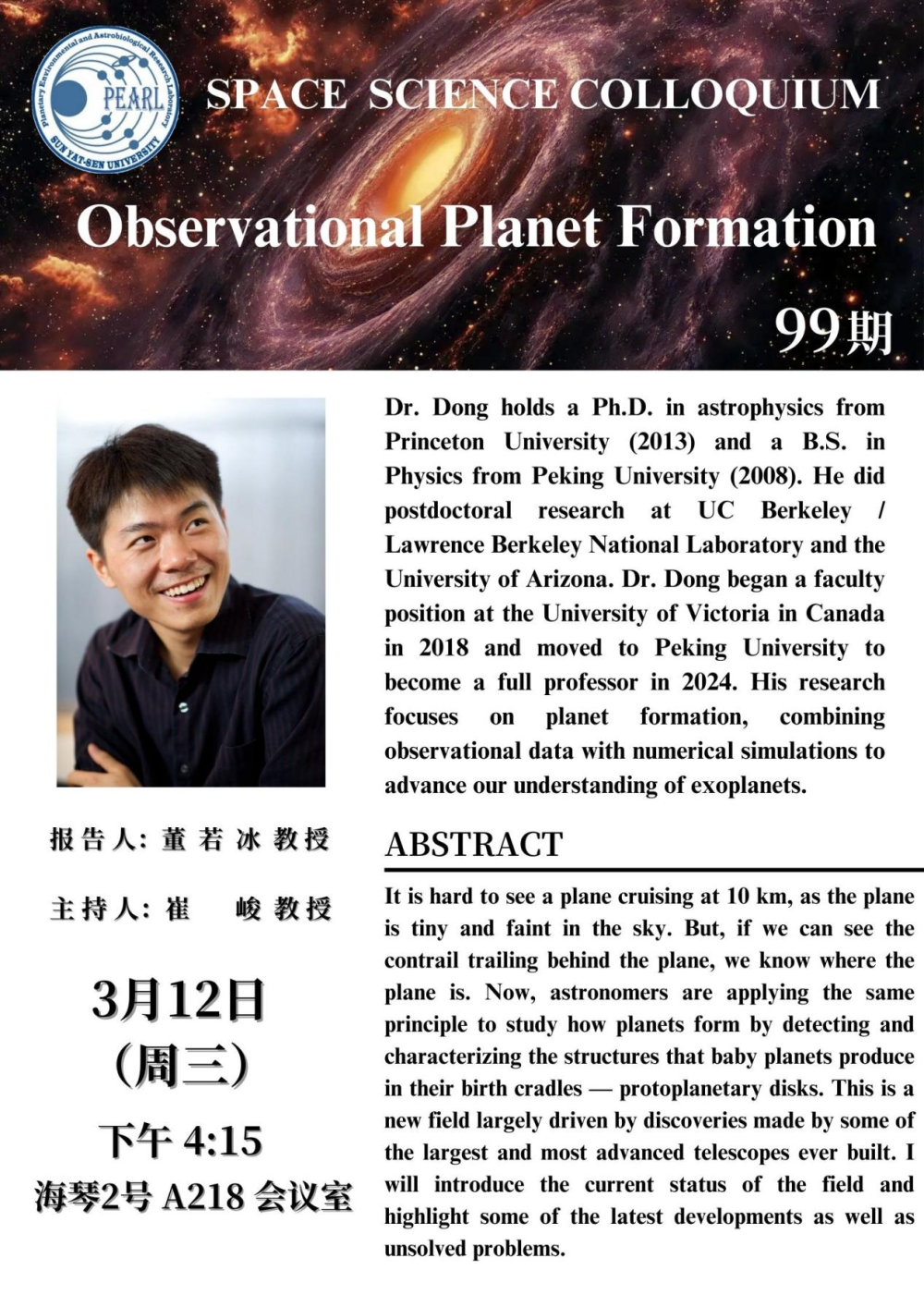Observational Planet Formation
Observational Planet Formation
Bio: Dr. Dong holds a Ph.D. in astrophysics from Princeton University (2013) and a B.S. in Physics from Peking University (2008). He did postdoctoral research at UC Berkeley / Lawrence Berkeley National Laboratory and the University of Arizona. Dr. Dong began a faculty position at the University of Victoria in Canada in 2018 and moved to Peking University to become a full professor in 2024. His research focuses on planet formation, combining observational data with numerical simulations to advance our understanding of exoplanets.
Abstract: It is hard to see a plane cruising at 10 km, as the plane is tiny and faint in the sky. But, if we can see the contrail trailing behind the plane, we know where the plane is. Now, astronomers are applying the same principle to study how planets form by detecting and characterizing the structures that baby planets produce in their birth cradles — protoplanetary disks. This is a new field largely driven by discoveries made by some of the largest and most advanced telescopes ever built. I will introduce the current status of the field and highlight some of the latest developments as well as unsolved problems.


